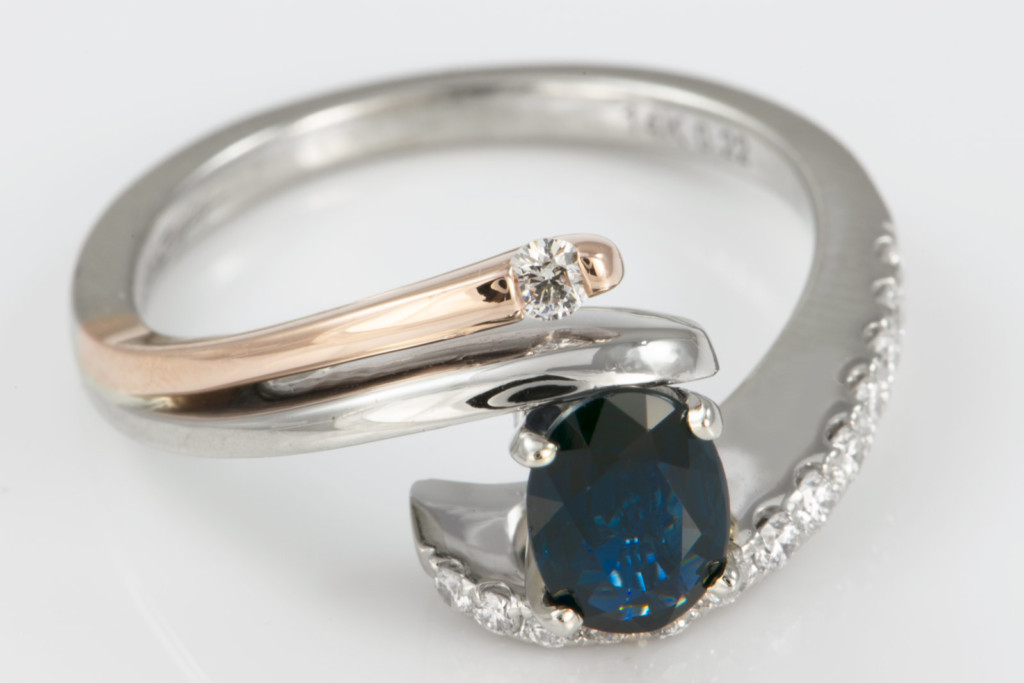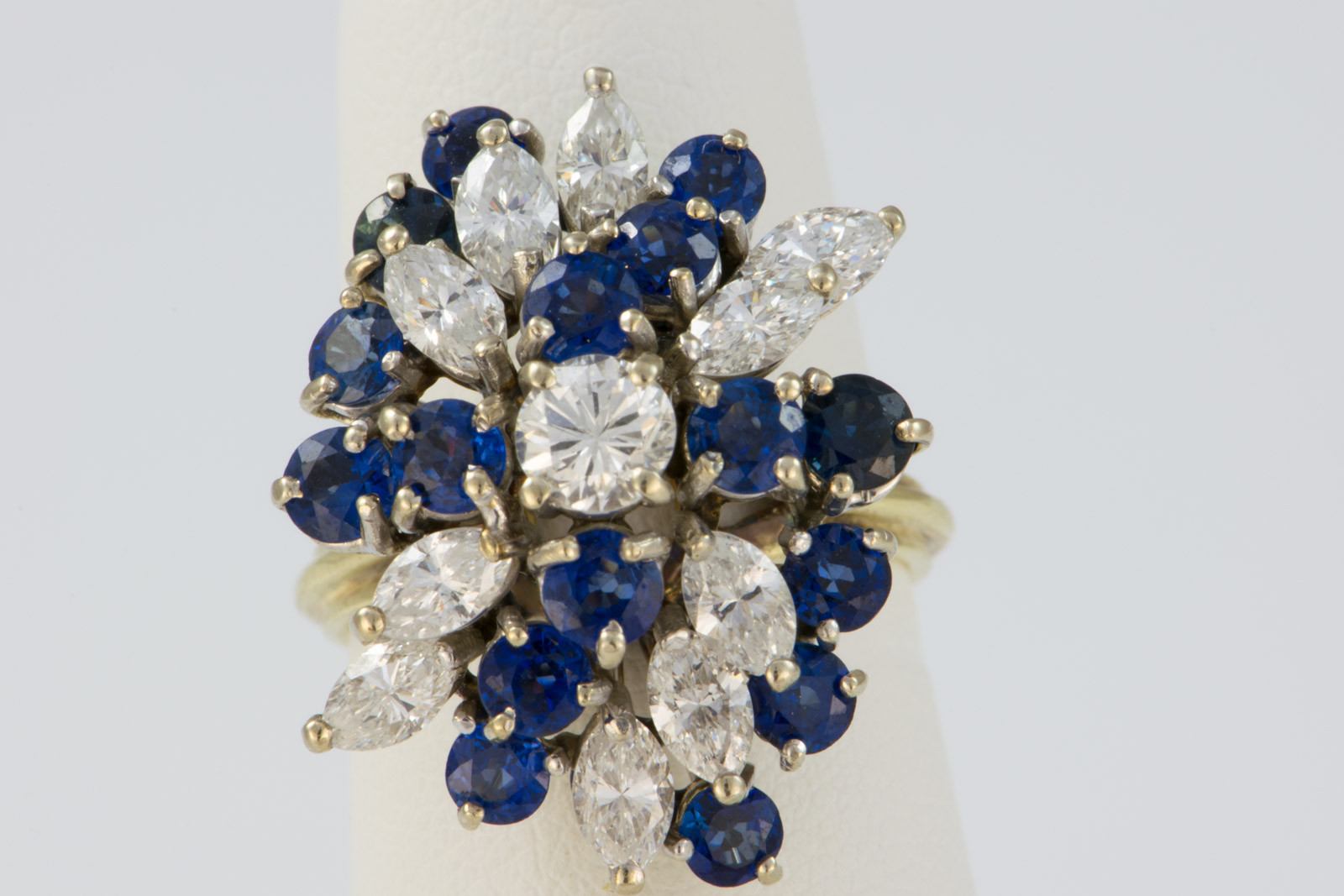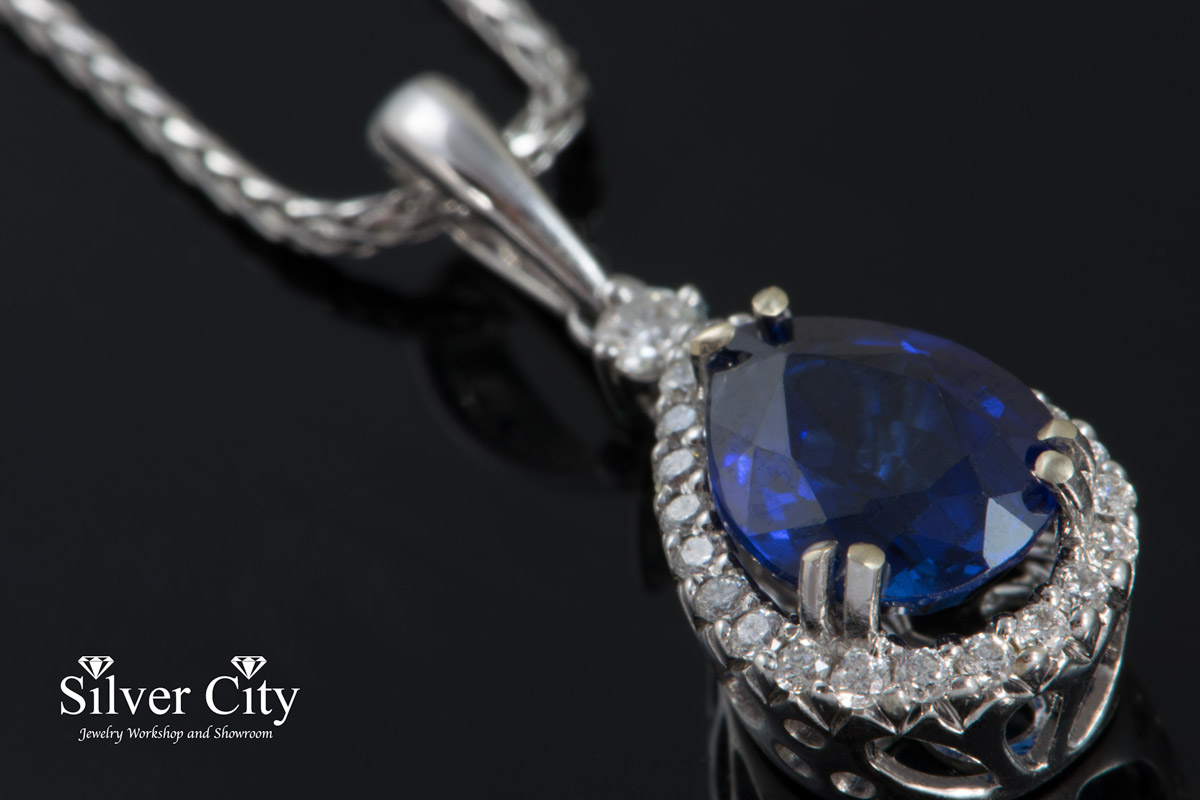
Sapphire
One of the most famous and beautiful of the colored gemstones, Sapphire typically refers to blue stones of the mineral Corundum. Sapphire also refers to any color of Corundum except for red, which of course, is ruby. Sapphire can be white, orange, pink, yellow, purple, or green. Sapphire is known for being a very fine gemstone due to its natural hardness which is only eclipsed by diamond, as well as its natural clarity and transparency.
Kashmir is known to have produced the finest sapphires and set the standard for their most ideal quality and color. The medium-dark color blue sapphire known as “cornflower” blue is particularly sought after and associated with those mined in Kashmir. Burma and Ceylon are also well known for high quality sapphires.
History and Etymology-
Sapphires have been worn by civilizations since likely the Roman Empire, and its name can be traced to a variety of sources, of which the Greek word sappheiros seems to be the closest root, but was likely used as the Greek word for Lapis Lazuli. Sapphire was believe to represent heaven and was thought to attract blessings, defend ones purity, and was used in medicine for a variety of maladies.
In Culture-
Sapphire is the birthstone for September and the gem for the 5th and 45th wedding anniversary.
Facts-
Mohs hardness- 9
Refractive Index- .762 to 1.770
Specific Gravity- 4






